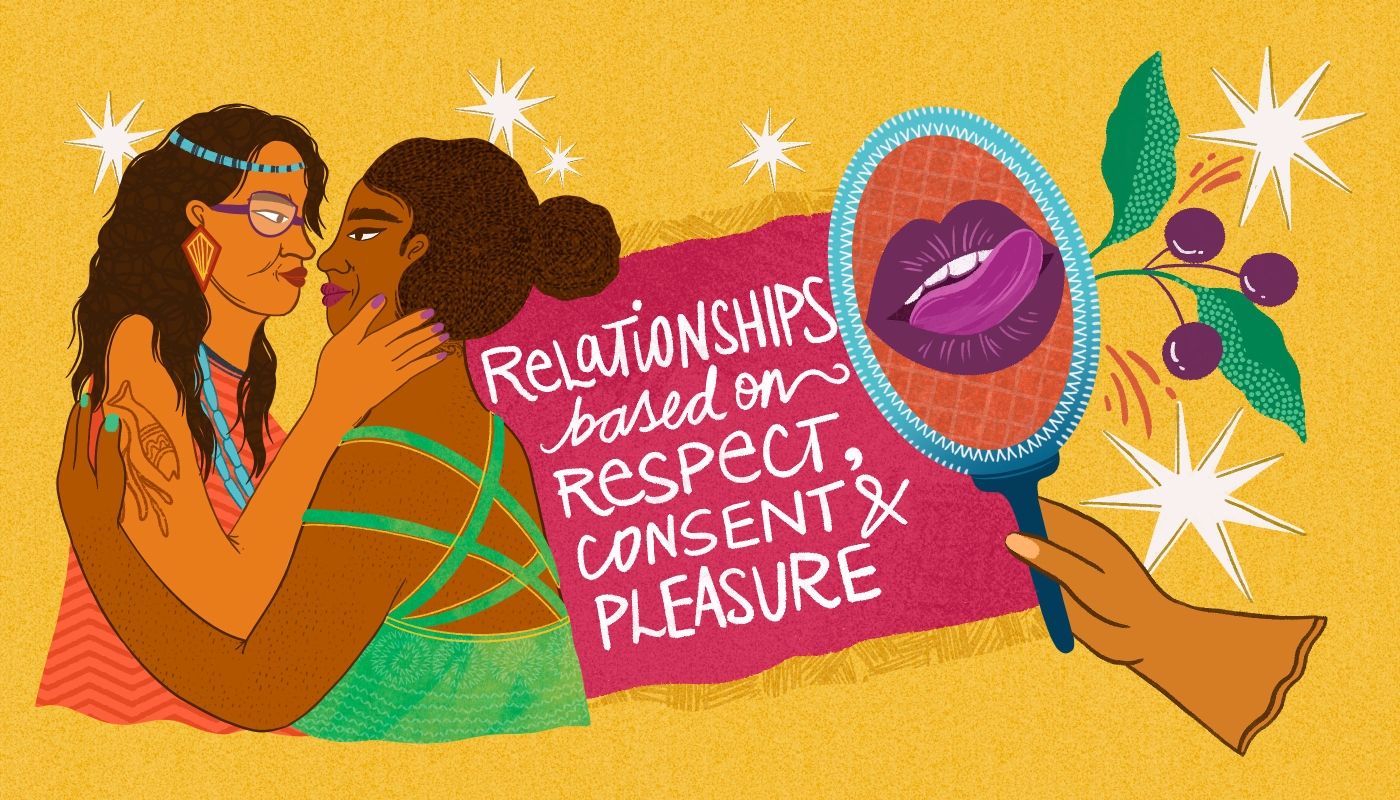Comprehensive sexuality education is a globally recognized human right that is fundamental to respecting and fulfilling the rights of all young people to the highest attainable standard of health and to be free from discrimination. Comprehensive sexuality education is also a critical way to provide and support quality and inclusive education, gender equality, the prevention of gender-based violence, and women and girls’ empowerment.
Adolescents and youth face specific barriers that undermine their capacity to exercise their sexual and reproductive health and rights, including the lack of access to comprehensive sexuality education and to other essential sexual and reproductive health services (e.g., contraception, testing and treatment for sexually and blood borne infections (STBBI), specialized sexual violence care, and safe abortion). Comprehensive sexuality education can facilitate access to these lifesaving and life-changing services and information.

What is comprehensive sexuality education?
“Comprehensive sexuality education is a curriculum-based process of teaching and learning about the cognitive, emotional, physical and social aspects of sexuality. It aims to equip children and young people with dignity; develop respectful social and sexual relationships; consider how their choices affect their own knowledge, skills, attitudes and values that will empower them to: realize their health, well-being and that of others; and, understand and ensure the protection of their rights throughout their lives. ‘’ -- UNESCO
Grounded in human rights and gender equality principles, comprehensive sexuality education teaches sexual and reproductive health and the principles of sexuality and relationships in a way that extends beyond the biology of reproduction and the risks of sexually transmitted infections (STIs). It provides the foundation for healthy relationships based on respect, consent, and pleasure.

What does the evidence say about comprehensive sexuality education?
Comprehensive sexuality education can be life changing for many young people. Studies show that the impacts of comprehensive sexuality education include:
- Improved attitudes related to sexual and reproductive health
- Stronger and healthier relationships that challenge harmful gender norms and stereotypes
- Reduced gender-based and intimate partner violence and discrimination
- Reduced sexual risk-taking
- Increased use of condoms and contraceptives
- Increased knowledge about sexuality, safer-sex behaviours, and risks of pregnancy, HIV, and other STIs
Why is comprehensive sexuality education important?
- Because it is a human right. Comprehensive sexuality education is a right of all young people. It is interconnected to the right to live free from violence and discrimination, the right to the highest attainable standard of mental and physical health, the right to receive and impart information, and the right to quality inclusive education.
- Because it provides the tools for young people to make informed choices about their sexual and reproductive health. Comprehensive sexuality education provides youth the information to decide about and exercise autonomy over their bodies.
- Because it contributes to gender equality. Comprehensive sexuality education challenges harmful gender norms and stereotypes. It also contributes to lower rates of gender-based and intimate partner violence. It supports healthy life choices and promotes interpersonal relationships based on consent, respect, and communication.
Why should Canada champion comprehensive sexuality education?
Providing comprehensive sexuality education to all young people is fundamental to fulfilling the human rights of women, girls, and gender diverse people. Comprehensive sexuality education is an important part of the essential, comprehensive package of SRHR services and information that allow young people to have control over their own sexual and reproductive health.
Canada has already taken great strides in advancing comprehensive sexuality education at the global level. At the UN Human Rights Council, Canada has highlighted comprehensive sexuality education as a critical intervention to prevent gender-based violence and has brought other countries alongside in these efforts. Through its Feminist International Assistance Policy and Health and Rights initiative, Canada has committed $700 million per year for SRHR, including adolescent SRHR and comprehensive sexuality education. However, much more needs to be done.
It is critical that as these funds are rolled out, quality programming in line with UNESCO’s International Technical Guidance on Sexuality Education and human rights standards must be prioritized alongside transparent accountability mechanisms. As a champion for SRHR, Canada must also continue to advocate for enabling legal and political environments that integrate comprehensive sexuality education into national health and educational systems as part of a holistic approach to SRHR.
